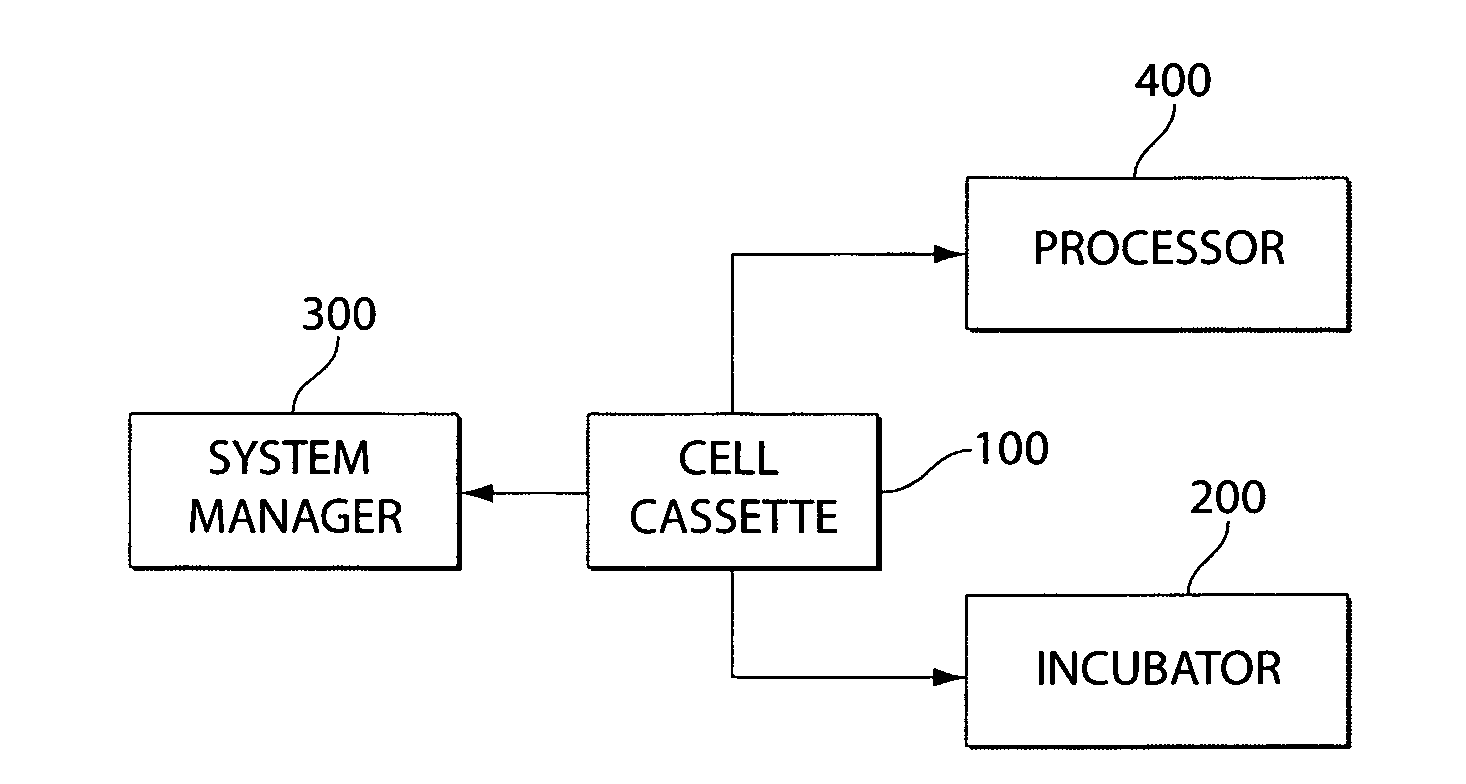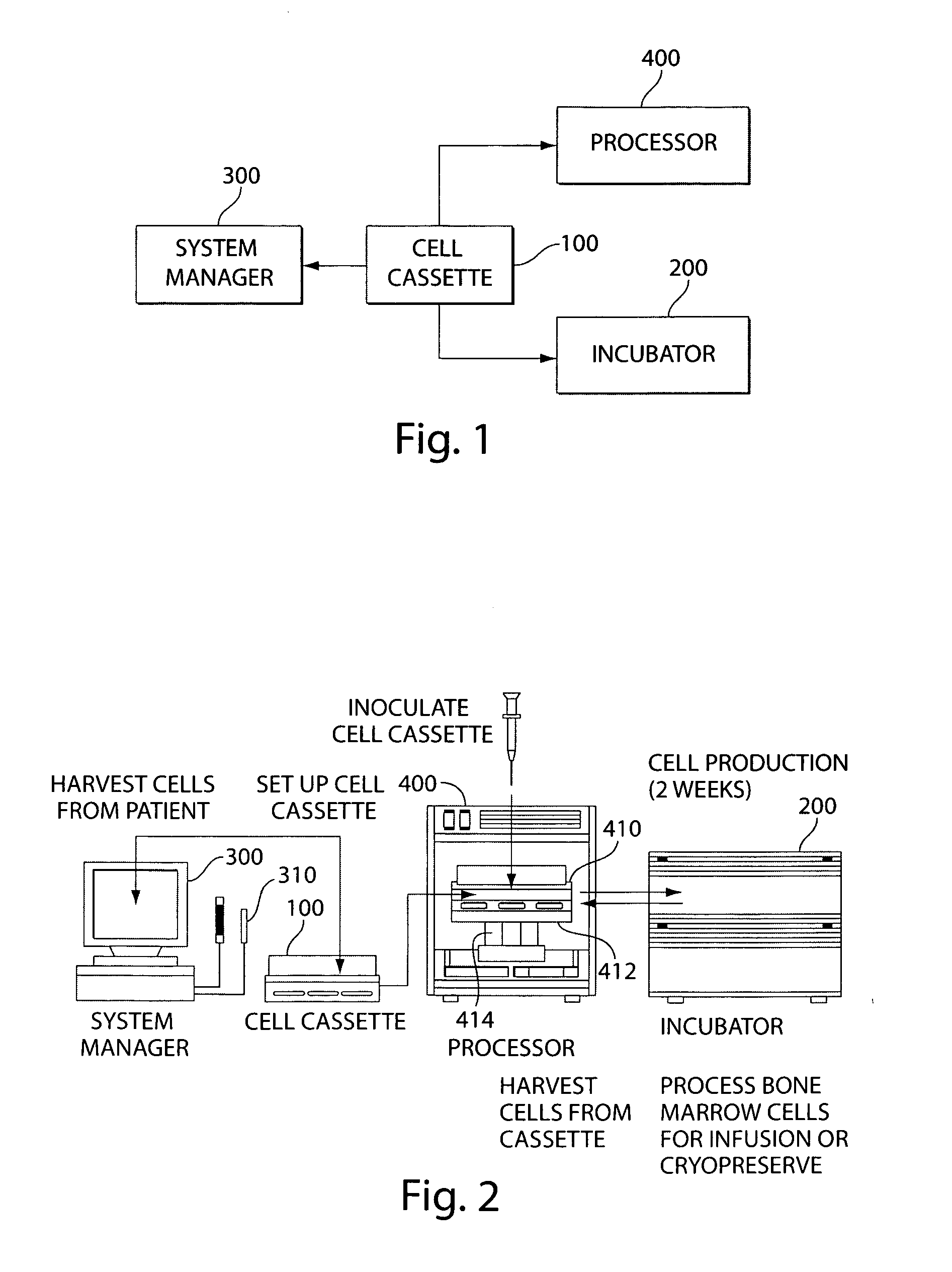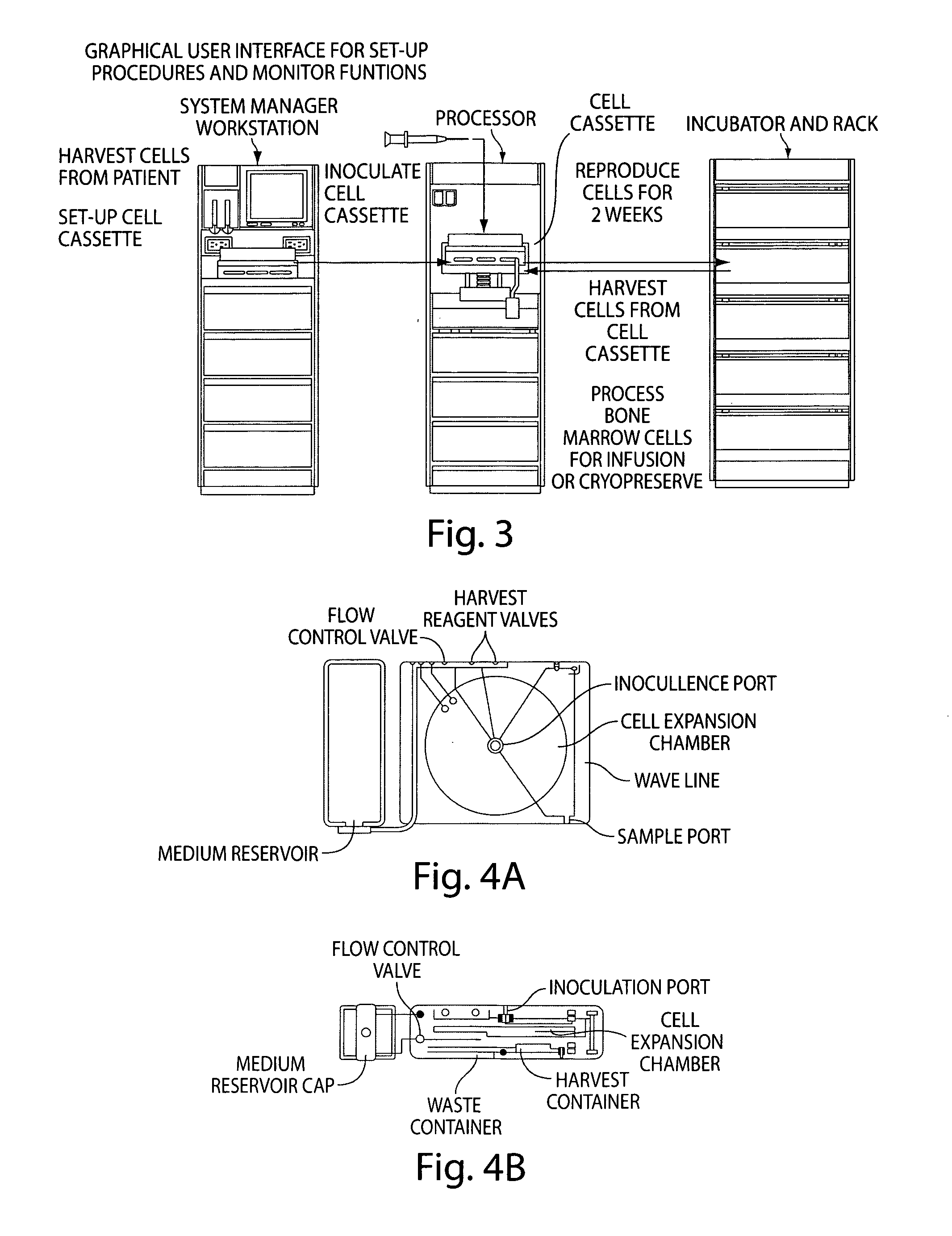Mixed cell populations for tissue repair and separation technique for cell processing
a cell processing and mixed cell technology, applied in the field of mixed cell populations, can solve the problems of recipient's immune system rejecting new biological materials, unable to meet the needs of esc derived tissues,
- Summary
- Abstract
- Description
- Claims
- Application Information
AI Technical Summary
Benefits of technology
Problems solved by technology
Method used
Image
Examples
example 1
Tissue Repair Cell (TRC) Culture and Wash Technique Protocols
TRC Culture
[0202]Fresh bone marrow mononuclear cells (BM MNC) that were isolated by FICOLL® from the blood of normal donors were purchased from Poietics Inc. (Gaithersburg, Md.). Alternatively aspirated bone marrow (BM) was received as a clinical specimen from patients and separated on FICOLL® to create a mononuclear cell prep. Cell concentration was assessed using an automated cell counter, and BM MNC were cultured by the method of Lundell, et al., described above. Prior to inoculation, culture chambers were primed with culture medium consisting of IMDM, 10% fetal bovine serum, 10% horse serum, 5 μM hydrocortisone, and 4 mM L-glutamine. Medium was passed through the culture chambers at a controlled, ramped perfusion schedule during the 12 day culture process. The cultures were maintained at 37° C. with 5% CO2 and 20% O2.
CYTOMATE® Wash Method
[0203]CYTOMATE® is a fully automated system designed for washing and concentrating...
example 2
The Wash Harvest Increased TRC Quality over the CYTOMATE® Wash
[0221]TRCs isolated using the Wash Harvest had greater cell viability, greater cell yield, less residual BSA, higher total numbers of progenitor cell, stem cell, immune cell and endothelial cell markers, increased ability to form colonies, comparable viability after needle passage, higher levels of anti-inflammatory cytokines and higher levels of indoleamine 2,3-dioxygenase (IDO). These improvements in the TRC population due to use of the novel Wash Harvest process allows the population to be used as a more effective tissue repair therapeutic agent when compared to current state of the art processes.
Materials and Methods
[0222]Cell Count / Viability
[0223]Cell count and viability were measured by Nucleocounter or trypan blue exclusion. The manufacturer's protocol was used for cell counting using the Nucleocounter. Briefly, the cell suspension was diluted to between 100,000 and 10,000,000 cells / ml, and a nucleocassette aspirat...
example 3
Enhanced Bone Repair Potential of TRCs from Wash-Harvest Based on Increased Numbers of CD90+ Cells
[0278]The bone-forming or osteogenic potential of unexpanded bone marrow mononuclear cells (BM MNC) and TRCs was assessed using an in vitro bone differentiation assay. Briefly, TRCs isolated using the wash-harvest process were cultured for up to 3 weeks in 35 mm dishes containing either control (OS−) medium (DMEM with 10% FBS) or Osteogenic (OS+) Medium (DMEM containing 10% FBS, 100 nM dexamethasone, 10 mM β-glycerophosphate, and 0.05 mM L-ascorbate-2-phosphate) at a concentration of 10,000 to 20,000 cells per cm2. Osteogenic differentiation was assessed by cell morphology, expression of alkaline phosphatase (AP) and formation of a mineralized matrix by calcium deposition. AP activity present in the differentiated culture was quantified using the AttoPhos kit (Promega), an enzyme-catalyzed conversion of the phosphate form of AttoPhos Substrate to BBT, and measuring absorbance at 435 nm ...
PUM
 Login to View More
Login to View More Abstract
Description
Claims
Application Information
 Login to View More
Login to View More - R&D
- Intellectual Property
- Life Sciences
- Materials
- Tech Scout
- Unparalleled Data Quality
- Higher Quality Content
- 60% Fewer Hallucinations
Browse by: Latest US Patents, China's latest patents, Technical Efficacy Thesaurus, Application Domain, Technology Topic, Popular Technical Reports.
© 2025 PatSnap. All rights reserved.Legal|Privacy policy|Modern Slavery Act Transparency Statement|Sitemap|About US| Contact US: help@patsnap.com



